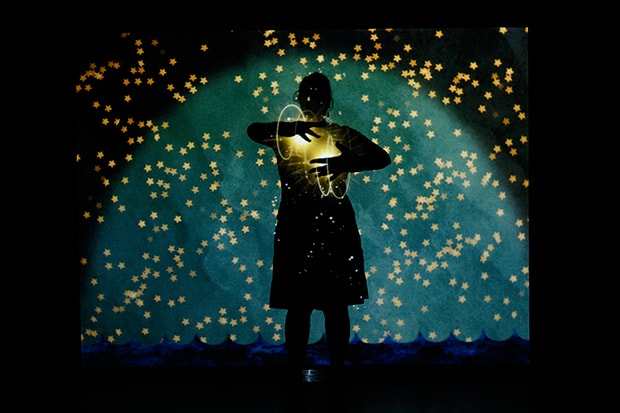[T]he neoliberal present is a space of a transition, not only between modes of production and modes of life, but between different, animating fantasies.
—Lauren Berlant, Cruel OptimismVirgin Mary, mother of god, become a feminist,
Become a feminist, become a feminist.
—Pussy Riot, “Punk Prayer”
Pussy Riots at Menopause
Two clusters of concerns provoke this reflection on neoliberalism, gender, and justice. First: What time is it? How to live in, and conceptualize, the forms and reformattings of temporalities that characterize the “present”—a neoliberal, ghosted, foreclosed, emergent, contingent, architectured, differentially distributed present… all at the same time. And, second: How to practice fantasy today, as a politics of the times? What shared or contested feminist imaginaries can nourish contemporary political work and play, as fantasy itself is reshaped by neoliberal forms of (non)sociality, and impoverished economies of time?
These are not precisely the questions that have animated my scholarly or performance work for the last several decades. They emerge, rather, out of an accumulated experience of failure, of having lost (political battles, institutional terrain, intellectual orientations, embodied weapons, courage, communities), and out of the experience of getting older. And they are questions that address one of the key realms of neoliberal im/materiality: the design and downloading of electronic information and imaging technologies as an everyday infrastructure of intimacy and distance, writing, research, capital, memory, war, labor, power, fantasy, and time. Call it digital communications. I’m inhabiting it right now. What “now” is that?
They are questions that do converge with my engagement, for a long time, with what I call “PSCYHOpolitics.”1 As perverse conceptual kin to biopolitics, PSYCHOpolitics tries to name and historicize a proliferation of state and non-state strategies for administering the psychic lives of individuals and population-level aggregates, while reaching toward a twisted, subreal sociological vision of the sorceries, enchantments, and unreason of power’s deployments. Through arts and sciences. Phantasm and history. Simulation and event. PSYCHOpolitics aims at the regulation and generation of perceptual, affective technologies of social and self-crafting. PSYCHOpolitics is itself a speculative craft, a spellcraft that today experimentally designs the electronic screenings of wor(l)ds that “we”—however unevenly—inhabit out of necessity and with desire. PSYCHOpolitics is a conceptual method for engaging the psychosomatic scenes and algorithmic screens through which a metrics of fantasy, and the phantasms of “real” time, are innovated, circulated, and transformed.
“Neoliberalism” is a claim re: historical periodization, and so raises questions about the politics of time and the ideological work performed by any act of periodization. Neoliberalism is also, in my read, a practice of dis/re/assembling temporal registers. Recent theoretical and political attention to logics of preemption and temporal foreclosure2 —with the future imploding into a present that actively anticipates it in order to manage it in advance, via digital modeling, discourses of terror, autonomic nervous systems, simulation events, racial profiling, military attack, tamoxifen, data mining, necromancy—can be linked to the temporal hegemony of “market” considerations in neoliberal cultures. In capitalist calculations, the market necessitates an ongoing splicing together of the present and the future in order to measure and make “value.” Time itself becomes a mobile, flexible register of neoliberal governmentality; futures are activated repeatedly in the present moment of their intensified foreclosure. With neoliberalism deeply entangled with digital capital and informatic power, the question of timing and of new techno-cultures of temporal multiplicities, of archival proliferations and erasures, becomes acute.
So let me pause briefly in front of a PSYCHOpolitical scene unfolding right ‘now,’ in the viral time of non-randomly globalized digital transmissions. In the volatile time of neoliberal phantasms of global market expansion and collapse, and the phantasmatic neoliberal sciences of ‘growing’ and ‘cutting.’ The scene on my digital screen shows three members of the Russian feminist punk band Pussy Riot sitting inside a glass cage in a Russian courtroom, listening to their sentencing to two years in a penal colony for “hooliganism” rooted in “religious hatred” and a “deep disrespect for society.” Their crime was rushing the alter at a Russian Orthodox cathedral in Moscow to videotape a “punk prayer” for Putin’s demise.3 The three young white women, shackled at the wrists, sit in the glass cage and roll their eyes, almost smirk, fearlessly indifferent, it seems, to the display of power by the Russian court. What time is it, in Russia, as the image circulates amidst Putin’s intensified targeting of public, domestic political dissent? What time is it along the pixilated surfaces of digital skin as the image feeds a political fantasy of transnational feminist solidarity, motivating street actions in over 60 North American and European cities, in support of Pussy Riot? What kind of punk gesture is it to suggest that the transnational fantasy of feminist solidarity mobilized here is perhaps a neoliberal rendition of the colonizing imaginary of ‘white men saving brown women from brown men.’ Now, in neoliberal times, we also have white women (activists and artists) saving white women (punks) from white women (the Russian judge presiding over the trial).
Cruel Feminism
How is the current moment implicated in a kind of “cruel feminism”—the correlate of Lauren Berlant’s recent work on “cruel optimism,” and the temporal genres of lived experience in the neoliberal precarities of everyday economic, affective, and political life?4 Cruel optimism is enacted via attachments to objects or scenes of desire (including the “desire for the political”) that undermine the very desire that animates the attachment. Might “cruel feminism” today be a phantasmatic form of attachment to political desires that are effectively blocked by that very attachment? The question of what political fantasies and imaginaries US feminists want to “attach” to today strikes me as a deep question of the times. Recent scholarship highlights how rights-based identity movements of the last several decades—gender, sexual, racial, national—have become incorporated into neoliberal, market-oriented governing mentalities that offer selective forms of social inclusion, representation, and cultural citizenship as a way to manage, not contest, power-charged histories of exclusion and violence. Inderpal Grewal notes how dominant US feminist discourses promote neoliberal “lifestyles of empowerment” accessed through consumer market segmentation.5 Jasbir Puar theorizes an emergent homonationalism based on the exceptional inclusion of primarily white, economically privileged US gays and lesbians, and the ongoing marginalizations of queers of color.6 Michelle Murphy analyzes the postcolonial, racialized biopolitics entangled with local histories of US feminist health and body politics.7
As Madonna, that branded US virgin export, takes the stage at a Moscow concert to support Pussy Riot’s “freedom of expression” and to “pray” for their release from prison, I wonder about the feminist figure and fantasy of “justice”—its difference and distance from a feminist politics of “freedom.” Justice in Euro-North-American genealogies is a gendered figure: female, breasted, blindfolded, bearing a scale and a double-edged sword. In contrast to “freedom,” which has a linear temporal trajectory (the move from historical captivity or oppression to a present/future liberation), justice has a more complex relation to history and time. Justice calls for a re-turn to and collective assessment of the past—the price paid, the possibilities thieved and burned, the casualties born, the captivity endured—in the name of a “just” rendering in the present. Freedom for rioting punk pussies would mean release from jail; justice would entail a future reckoning for those forces and figures who built their prison.
Taking seriously the term “justice” requires, I think, a reckoning with feminist political fantasies and the multiple temporal registers we live in, theorize, and embody. The black-and-white Guy Fawkes mask that spread like a queer talisman through Occupy movements was a popular download from the graphic novel V for Vendetta. Avenging neoliberal dispossessions, in the pursuit of justice, is a political fantasy that requires a time-based practice of memory and historical imagination, and a move through and beyond the PSYCHOpolitical impasses of a cruel feminism.
- Jackie Orr, Panic Diaries: A Genealogy of Panic Disorder, (Durham: Duke U P, 2006). [↩]
- Brian Massumi, “The Future Birth of the Affective Fact,” The Affect Theory Reader, M. Gregg and G. Seigworth, eds., (Durham: Duke U P, 2010); Melinda Cooper, Life as Surplus: Biotechnology and Capitalism in the Neoliberal Era, (Seattle: U of Washington P, 2008). [↩]
- Pussy Riot. Pussy Riot! A Punk Prayer for Freedom. New York, NY: The Feminist Press, 2013. Also, see freepussyriot.org. [↩]
- Lauren Berlant, Cruel Optimism, (Durham: Duke U P, 2011). [↩]
- Inderpal Grewal, Transnational America: Feminisms, Diasporas, Neoliberalisms, (Durham: Duke U P, 2005). [↩]
- Jasbir Puar, Terrorist Assemblages: Homonationalism in Queer Times, (Durham: Duke U P, 2007). [↩]
- Michelle Murphy, Seizing the Means of Reproduction: Entanglements of Feminism, Health, and Technoscience, (Durham: Duke U P, 2012). [↩]




